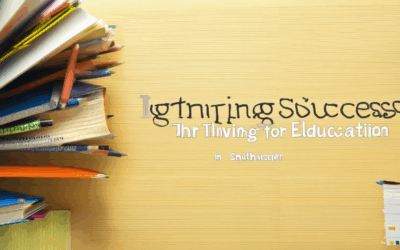The journey of college enrollment is one of life’s pivotal moments, shaping both personal growth and professional futures. For many, it represents the transition from childhood to adulthood, marked by excitement, anxiety, and a desire for knowledge. While the process may seem overwhelming at times, navigating college enrollment thoughtfully can lead to transformative experiences and endless opportunities. This guide aims to illuminate the path, offering insights into the intricate details of the college enrollment process, the challenges that may arise, and the demographic trends influencing today’s educational landscape. By understanding the complexities, exploring available resources, and staying informed about current trends, prospective students can make decisions that align with their aspirations and long-term goals. Whether you’re just beginning your college search or considering re-enrolling after a break, this guide serves as a comprehensive roadmap designed to empower you to take control of your academic journey.
How Does Enrollment Work in College?
Enrollment in college is a structured process designed to help students transition smoothly into higher education. Below is a step-by-step guide to understanding how enrollment works:
1. Research and Explore Colleges
Browse through various colleges and universities to find the ones that align with your career goals and interests. Visit their official websites, attend open houses, or schedule campus tours to gather information about their programs, faculty, and student life.
2. Apply for Admission
Once you’ve identified a college, the next step is to apply for admission. Most colleges require submission of your academic records, standardized test scores (if required), a personal statement (essay), and possibly recommendation letters. Check the specific requirements of the institution you’re applying to and submit your application before the deadline.
3. Receive Admission Decision
After submitting your application, the college will review your materials. Depending on the competition and your qualifications, you may receive an acceptance letter, a waitlist notification, or a denial letter. Acceptance letters typically include details about next steps and deadlines for confirming your enrollment.
4. Register for Classes
If you’re accepted, you’ll need to register for your courses. Most colleges allow you to select your classes online through a registration portal. Make sure to check the academic calendar and course catalog to choose courses that fit your major and schedule.
5. Pay Tuition and Fees
After registering, you’ll need to pay the tuition and any associated fees. Payment methods vary by institution, so check with the bursar’s office or financial aid office for payment options and deadlines.
6. Attend Orientation
Many colleges offer orientation programs for new students. These events help you familiarize yourself with the campus, meet fellow students, and learn about academic policies and resources.
7. Seek Financial Aid
Applying for financial aid is essential to manage tuition costs. Submit applications for scholarships, grants, and loans early to secure funding for your education. Many colleges offer need-based aid packages.
8. Meet with Academic Advisors
Once enrolled, schedule meetings with academic advisors to discuss your academic progress, course selections, and degree plans. They can provide valuable guidance and help you stay on track.
9. Set Goals and Stay Organized
Create a study schedule, set short-term and long-term goals, and stay organized with tools like planners or digital calendars. Regularly reviewing your progress and seeking support when needed will contribute to your success.
By following these steps, you can navigate the college enrollment process effectively and begin your academic journey with confidence. Remember to start early, stay organized, and seek assistance when challenges arise.
What is the #1 hardest college to get into?
Harvard University consistently ranks among the most difficult colleges to gain admission to, with an exceptionally low acceptance rate of under 5%. Its rigorous academic standards, highly competitive applicant pool, and limited number of spots make it a pinnacle of achievement for many aspiring students.
Top Tier Competitors
- Stanford University – Known for its STEM fields and overall academic excellence, Stanford boasts an acceptance rate of approximately 4.5%.
- MIT – Famous for its technological innovation and research focus, MIT accepts around 7.1% of applicants.
- University of Pennsylvania (UPenn) – Renowned for its law and medical schools, UPenn has an acceptance rate of about 8.7%.
- Columbia University – A top choice for many, Columbia admits roughly 6.6% of applicants.
Why Harvard?
Harvard’s prestige extends beyond its academics, with its commitment to producing leaders in various fields. The university’s holistic admissions process evaluates not just GPA and test scores but also leadership potential, extracurricular involvement, and personal achievements.
Getting In: Tips & Resources
Applying to Harvard requires more than stellar grades and test scores. Consider the following:
- Extracurricular Engagement – Demonstrated leadership in clubs, organizations, or research projects can set your application apart.
- Personal Statement – Craft a compelling narrative highlighting your unique experiences and goals.
- Recommendations – Letters of recommendation from influential figures in your field can significantly impact your chances.
For more insights and application strategies, explore our College Admissions Guide and Scholarship Resources .
What Percentage of 20 to 24 Year Olds Are Enrolled in College?
According to the latest data from the National Center for Education Statistics (NCES), approximately 35% of individuals aged 20 to 24 are currently enrolled in college.
This percentage reflects a notable decline compared to pre-pandemic levels, likely influenced by the disruptions caused by the COVID-19 pandemic, which led many students to defer their college plans.
For the most current and detailed statistics, we recommend consulting the NCES website, which provides comprehensive tables and reports on educational enrollments and demographics.
Why Are Gen Z Not Going to College?
Generation Z, often seen as tech-savvy and forward-thinking, is making waves by choosing alternative paths over traditional college attendance. Here are the key reasons behind this trend:
- Student Debt Concerns: The burden of student loans has grown significantly, leading many Gen Z members to view college as an unwise financial decision. High tuitions and limited job prospects post-graduation contribute to this sentiment.
- Rapidly Changing Job Markets: The rapid evolution of industries, driven by technological advancements, means that traditional degrees may not guarantee long-term stability. Many Gen Z individuals are opting for skill-based certifications or online courses to stay competitive.
- Focus on Personal Growth: Gen Z prioritizes personal fulfillment and experiences. They are drawn to careers that allow for travel, entrepreneurship, or creative pursuits, which often don’t require a college diploma.
- Financial Instability at Home: Economic challenges faced by families can limit access to higher education. Financial strain may make college seem unattainable, even for those who desire it.
- The Rise of the Gig Economy: Freelancing and side hustles provide viable income streams without the necessity of a degree. This shift allows Gen Z to explore diverse earning opportunities outside of traditional career paths.
- Perception of College Value: There is a growing skepticism towards the return on investment (ROI) of college. Gen Z questions the long-term benefits and often places greater emphasis on real-world experience and internships.
- Mental Health Factors: The stress and anxiety associated with the college application process, combined with academic pressures, can deter individuals from pursuing higher education.
These factors collectively highlight a nuanced perspective among Gen Z, reflecting a generation that values flexibility, autonomy, and personal autonomy over traditional educational pathways.
Is College Enrollment Declining?
College enrollment trends have been a topic of discussion in recent years, with varying indicators depending on the institution, region, and student demographics.
- National Trends: According to the National Student Clearinghouse, overall college enrollment rates have shown a slight decline in the past few years, particularly among traditional-age students.
- Regional Variations: Some regions, such as those experiencing economic instability, have reported more significant drops in enrollment due to financial constraints and job market demands.
- Rising Costs: Tuition increases and living expenses have contributed to decreased interest in traditional four-year degrees among many prospective students.
- Competitive Alternatives: The rise of trade schools, online education, and apprenticeship programs has provided viable alternatives to traditional college paths, potentially diverting students from four-year degree programs.
- Student Priorities: Many students are opting for shorter-term programs or delaying enrollment to save money or explore career paths.
While enrollment may be declining in certain segments, it’s important to consider that colleges and universities continue to adapt by introducing new programs, flexible learning options, and support services to attract students.
For more insights, explore resources like EnrollSchool.com , which provides detailed analysis on educational trends and enrollment patterns.
Are Millennials More Educated Than Gen Z?
Millennials and Generation Z are both highly educated groups, but their approaches to education and learning differ significantly. Here’s a breakdown of their educational characteristics:
Higher Education
- Millennials often pursued traditional pathways, attending four-year colleges and universities.
- Gen Z has embraced alternative education models, including online courses and microcredentials.
- Both generations have access to a wide range of educational resources, though Millennials may have had more consistent access to university-level education.
Formal Education
- Millennials may have higher rates of completing traditional degrees compared to Gen Z.
- Gen Z is more likely to pursue diverse learning experiences, such as dual enrollment programs or trade schools.
- Both generations value continuous learning, though Millennials might prioritize formal credentials more.
Workplace Readiness
- Millennials may have a stronger grasp of workplace norms and team collaboration due to earlier exposure to professional environments.
- Gen Z excels in digital literacy and adaptability, traits critical for modern careers.
- Both generations are tech-savvy, with Gen Z growing up in the age of social media and advanced digital tools.
Conclusion
Both Millennials and Gen Z are educated in unique ways, with each generation bringing distinct strengths to the table. Millennials may excel in traditional academic achievements, while Gen Z leads in innovative learning methods and digital proficiency. Ultimately, the choice of educational path lies with the individual, reflecting personal goals and career aspirations.









0 Comments